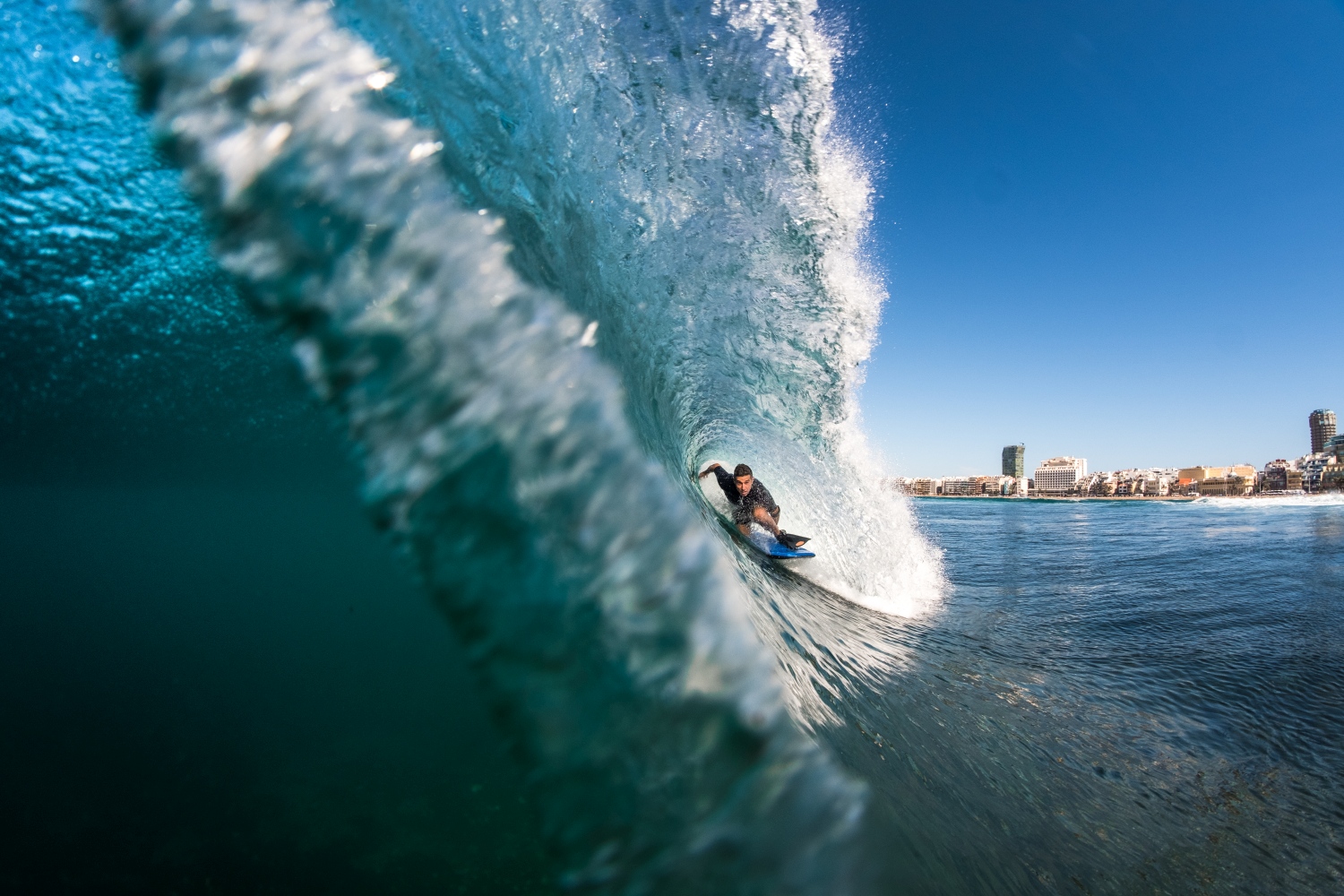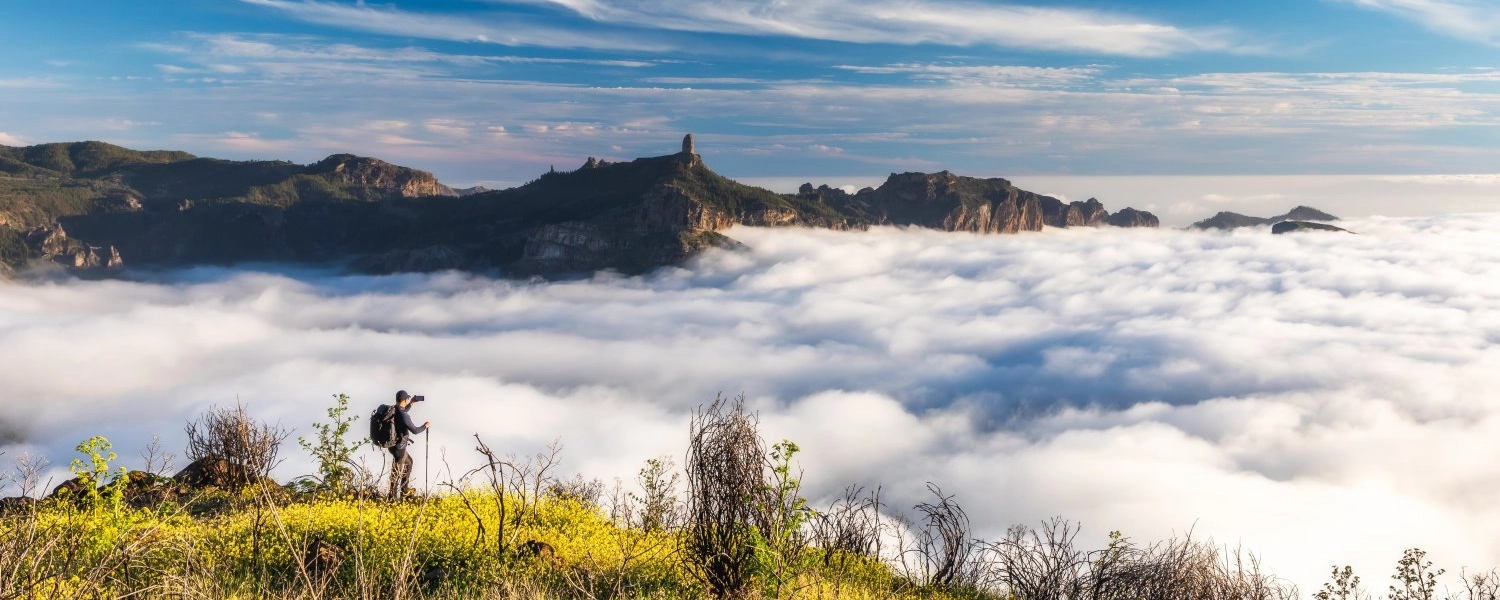- Details
- Written by: Sarah Coad
Sponsored content
Gran Canaria may not be the biggest of the Canary Islands, but it more than makes up for it in the variety of activities on offer to adventurous visitors. From the bustling capital city of Las Palmas de Gran Canaria, the largest town in the whole island chain, to the sand dunes in the south and volcanic mountainous terrain around the Pico de las Nieves, the island offers something for everyone.
And around its 236km of coastline you have a sea of opportunities for exciting watersports. Watch dolphins and whales, go on a boat excursion, take a trip to the bottom of the sea, go fishing, and sailing, ride the waves on a jet-ski, slide across them on a surf or bodyboard, zip over the surface on a windsurfer.
Where is Gran Canaria?
Part of the autonomous Spanish community of the Canary Islands, Gran Canaria lies in a part of the Atlantic known as Macaronesia, which includes the archipelagos of Madeira, Salvajes, Azores and Cape Verde. The closest point on the African coast is roughly 210km away, while Cadiz, the closest port on the European continent, lies 1,250km away.
Many UK operators feature Gran Canaria packages, including specialist walking and activity holiday companies. UK airlines including British Airways and easyJet fly regularly to the island from many regional UK airports, with an average flight time of just under 4hrs 30mins.
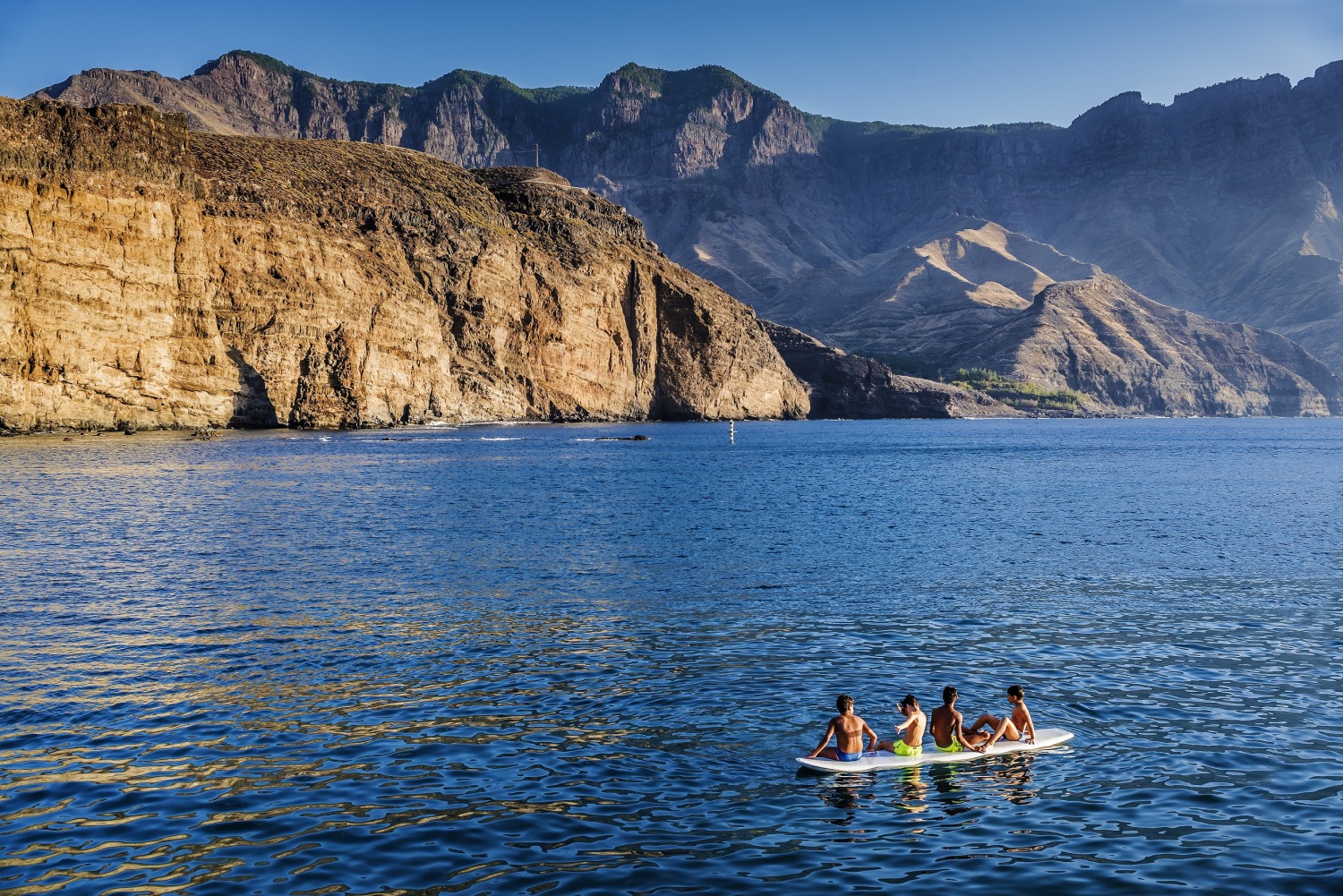
Is Gran Canaria good for water sports?
Well, yes. Very. As an island, Gran Canaria has pretty much everything you need for watersports. There are surf spots scattered all around the island, from long easy beaches to secluded coves, so you’ll almost certainly be able to find good waves no matter which direction the swell is coming from.
If you're more into sailing, windsurfing or kite-surfing, the Atlantic winds insist on sending Gran Canaria the best breezes to fuel your wonderful obsessions. If you’re into sea-kayaking or stand-up paddleboarding, you’ll find a whole host of secluded coves and beaches to explore. And if you'd rather get your kicks under the water than on it, divers will find a whole world of possibilities here.
Gran Canaria offers numerous water-related activities for the whole family to enjoy all year round through specialised companies associated with the 'Gran Canaria Blue' brand, such as boat trips, dolphin or whale watching, surfing, jet skiing, parasailing and scuba diving - just some of the many possibilities available on the island to enjoy its 236 km of coastline.
The best water sports to try in Gran Canaria
Whether you're happiest on the water, in it or even above it, see if these Gran Canaria water sports will float your boat...
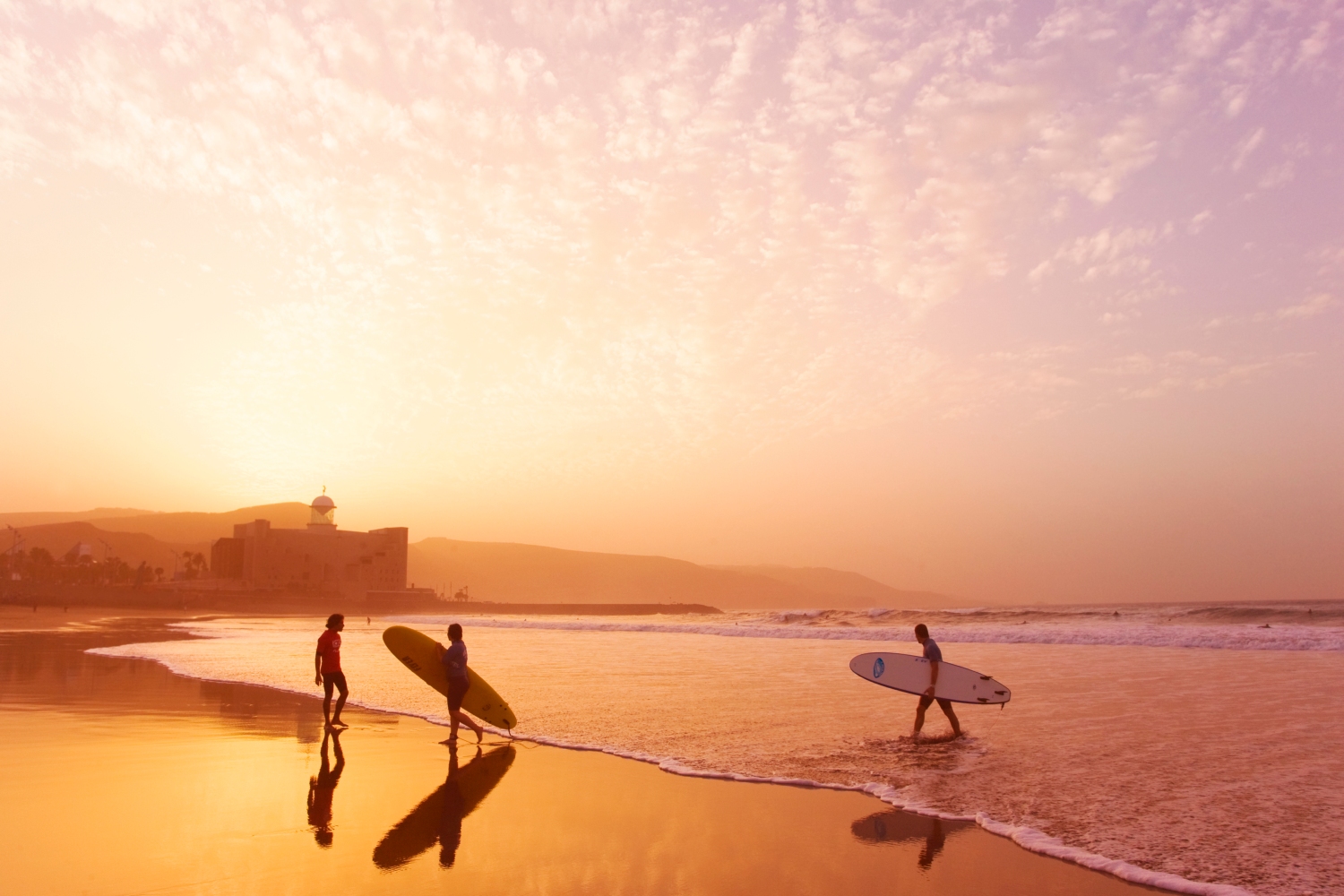
Surfing
Good waves just keep on coming to the shores of Gran Canaria. Day after day after day. Good, medium sized waves for the novice and big waves for the more experienced surfer. Beginners should head to the beaches where it is easy, like Las Canteras and Playa del Ingles round to the large stretch of sands at Maspalomas, on the southern tip of the island, or quieter family beaches like at San Agustín, the beach at Amadores or the smaller one at Puerto de Mogán in the south west. To help them, first-timers also have many prestigious surfing schools so that they can learn in a safe environment.
For more experienced surfers, the northern zone is the place to go. This is defined as the stretch from El Confital (Las Palmas in Gran Canaria), with the ‘Monjas’ wave, up to Gáldar and the ‘Bocabarranco’. It stands out as a rocky coast, with the highest wave frequency and the strongest breakers. Under perfect conditions, waves can reach as high as 5 metres.
Altogether, along the coastline, there are up to 23 spots to go surfing and bodyboarding away from the crowds.
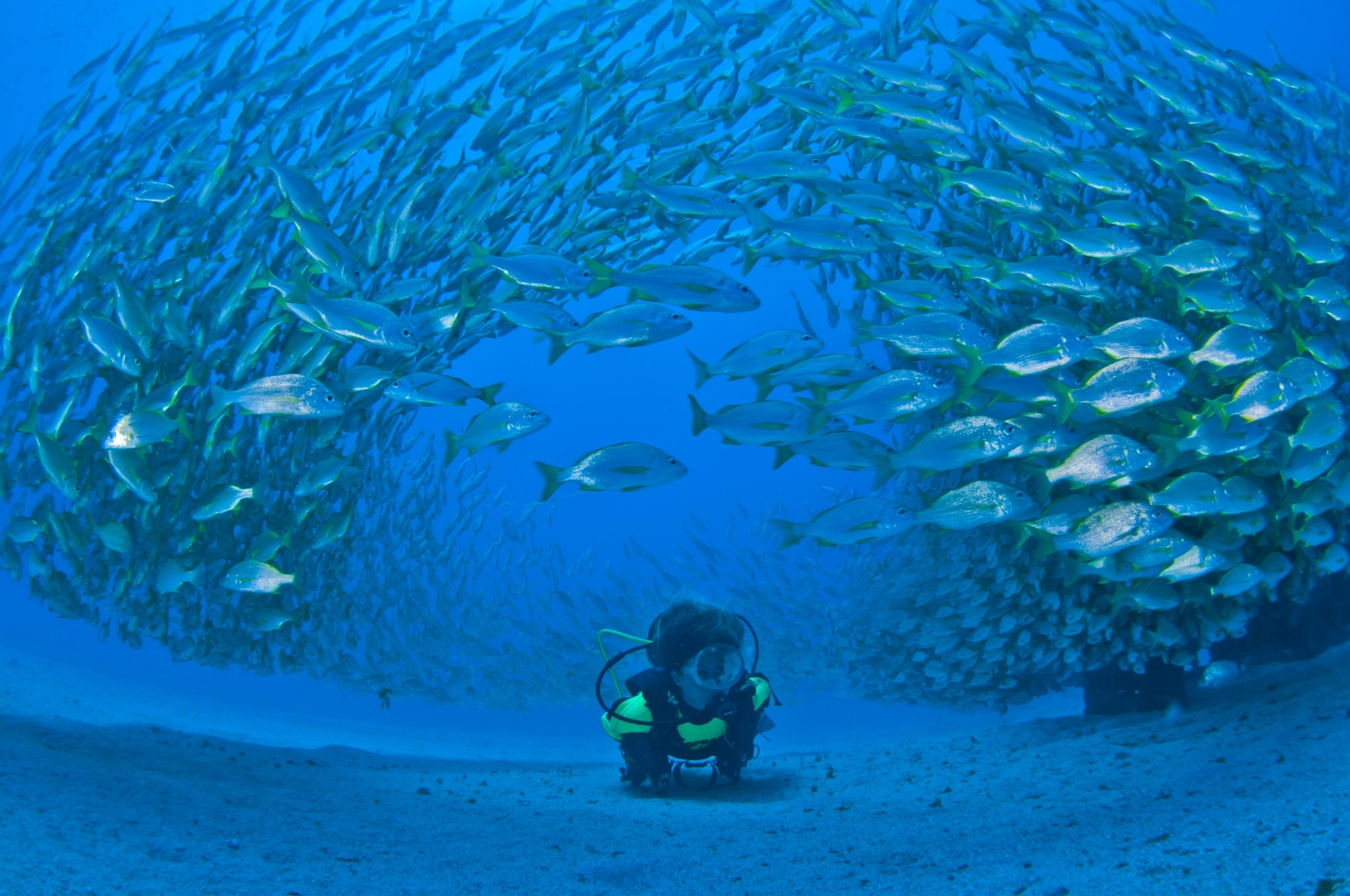
Diving
Due to its volcanic origins Gran Canaria often surprises divers with the wealth of its marine-scape and the variety and beauty of its underwater landscapes. There are interesting scuba diving areas spread all around the island's coast, and you can find different scuba schools where you can learn to dive and participate in organised dives without having to own your own equipment.
PADI, the Professional Association of Diving Instructors, lists 15 dive sites around the island, of which 10 are reef dives, 8 are ocean dives and 8 are wall dives. Nice spots include Bahia Lila (a long overhanging wall, with a cave to swim through, a nice arch and plenty of anemones to gaze at), Cueva Grande (the Big Cave), where you might see stingrays being cleaned by shrimps and Sardina del Norte (a calm spot off the north coast where you can observe a huge variety of marine life, including seahorse, angelfish, barracuda, octopus, and even angel sharks).
For wreck fans, head to Mogán in the south-west for Como II - the wreck of a small fishing boat bustling with yellow snappers, plus visiting angel sharks, hunting tuna, and butterfly rays or electric rays.
But one of the most dramatic dive locations is Hole in the Wall and Punta de la Monja on the east side of the island. Hole in the Wall is entered via a v-shaped channel from a reef, leading to a large archway filled with Trumpet Fish and Bream; swim further and you might encounter around 2,000 roncadores in a large 'fish ball', shoals of bream - and barracudas in search of a snack. Around the point of the Punta de la Monja, in the calmer waters of El Cabrón bay, you can spot conger eels and huge shoals of Atlantic Damselfish.
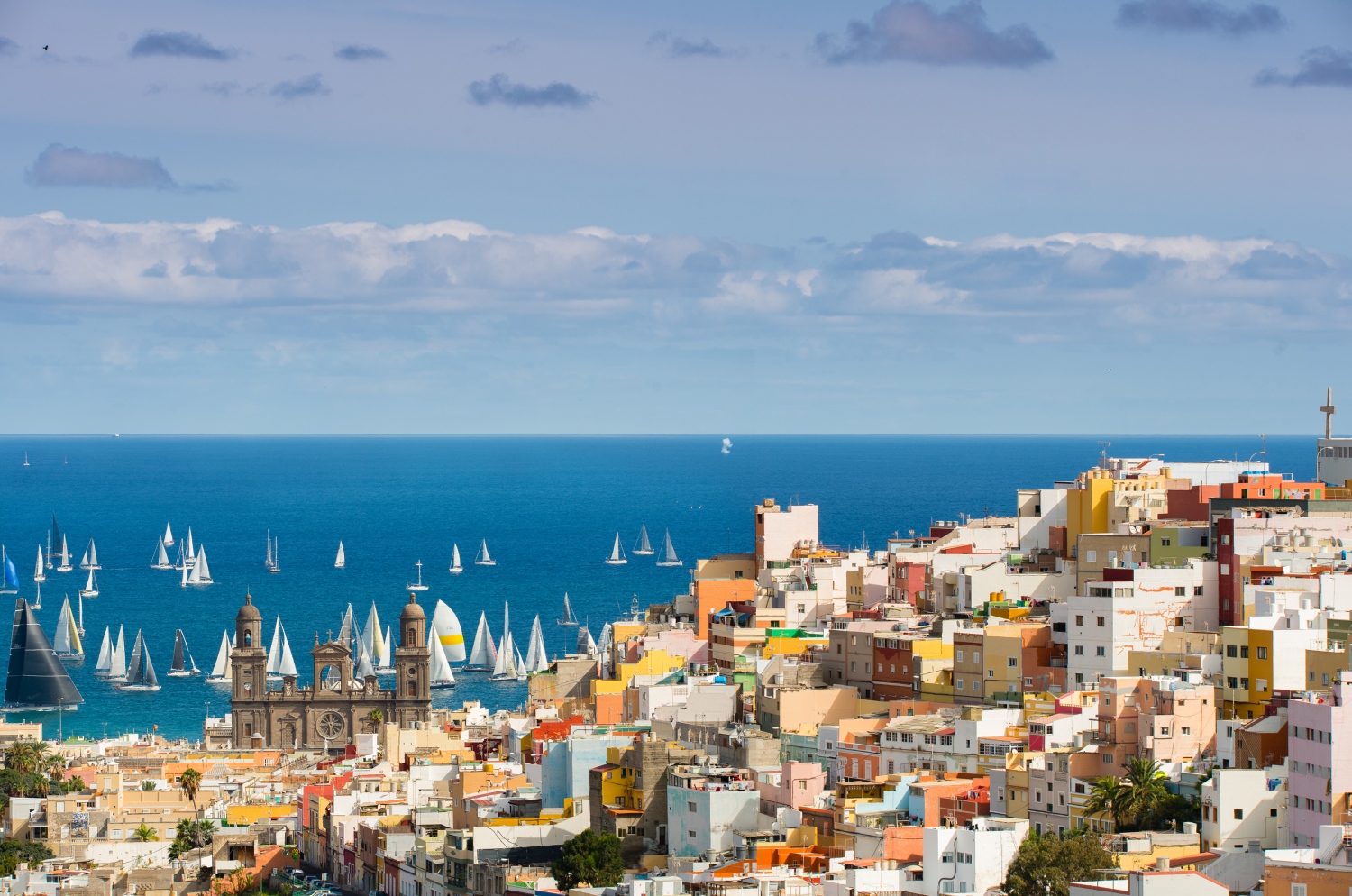
Sailing
The fantastic wind conditions and the mild climate of the island have made sailing one of the more widespread activities both for islanders and visitors. The main spots to go sailing on the island are the city of Las Palmas de Gran Canaria, mainly the bay of Alcaravaneras and Las Canteras, and on the south coast, Maspalomas and Mogán. Gran Canaria is particularly well-known in international sailing competitions, as the national Olympic team is made up of sailors from the island.
Gran Canaria has also developed an extensive harbour infrastructure, which includes marinas and fishing havens equipped with basic long-term mooring services, which make many water sports possible. Popular harbours include Puerto de Mogan, Puerto Deportivo de Puerto Rico, Puerto Deportivo de Pasito Blanco and Muelle Deportivo Marina Anfi del Mar.
However, Muelle Deportivo de Las Palmas de Gran Canaria, a marina in the heart of the island’s capital, is the leading centre. It boasts fantastic sport facilities, high quality services and is considered as one of the most important and strategic harbours in the Atlantic. Gran Canaria has a long tradition of being a port of call among sailors crossing the Atlantic and heading for the Caribbean. Even Columbus anchored here before heading west!
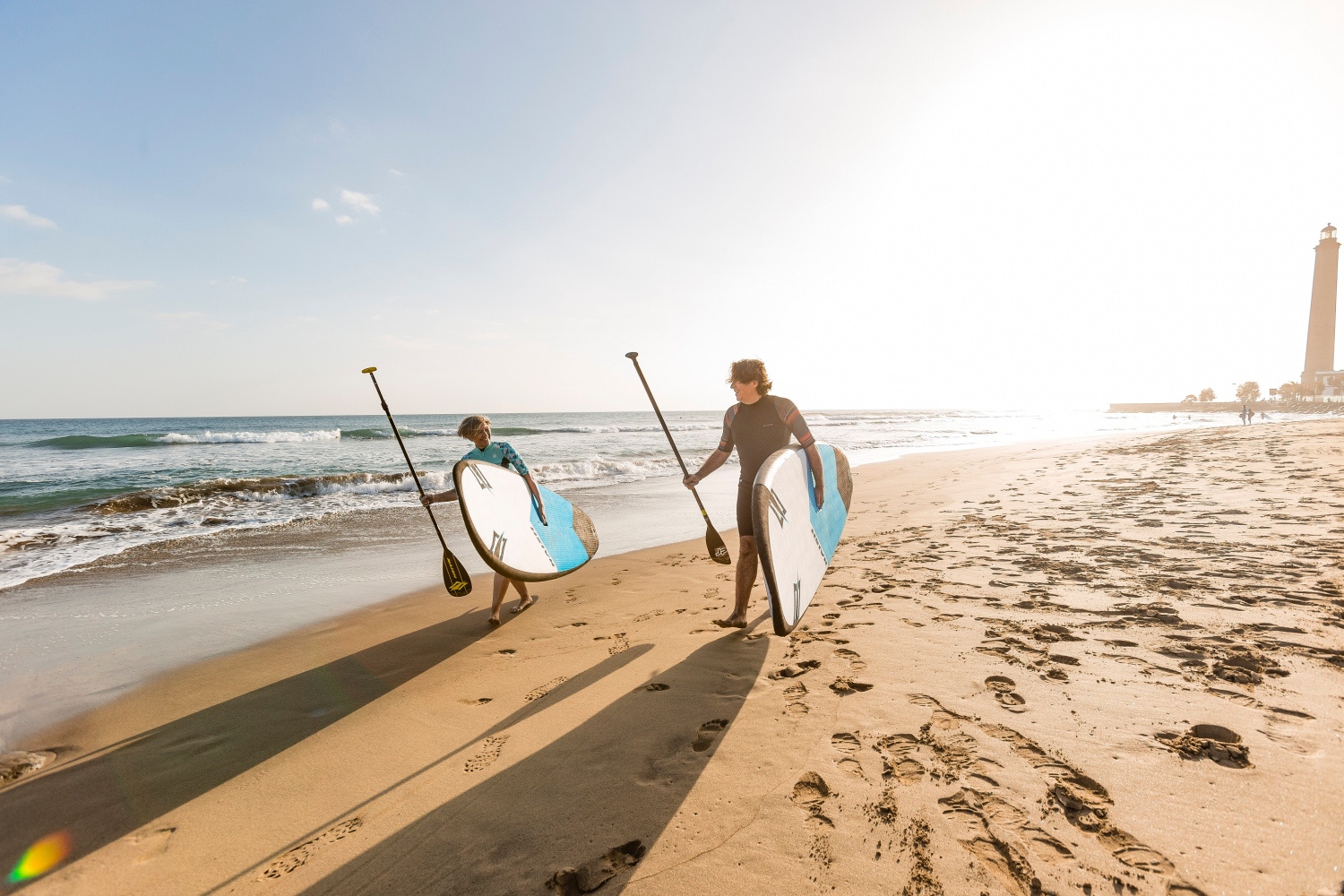
Kayaking and SUP
A great way to enjoy the sea is to go on a relaxing or fun kayak trip, and even more so if you do it in a setting such as the coast of Gran Canaria. This activity is perfect to enjoy on your own, as a couple, with your friends or family. It is very popular with children and perfect for an unforgettable day out. Top of the list for a great family day out would be to explore the Mogan Caves on the south west coast, and combine your paddling with some snorkelling.
SUP, or Stand-up Paddle boarding, combines an incredible full body exercise which increases your strength, cardio fitness, balance and flexibility. This activity is very easy to learn and provides great exercise. Playa del Ingles is a popular spot to get into this activity.
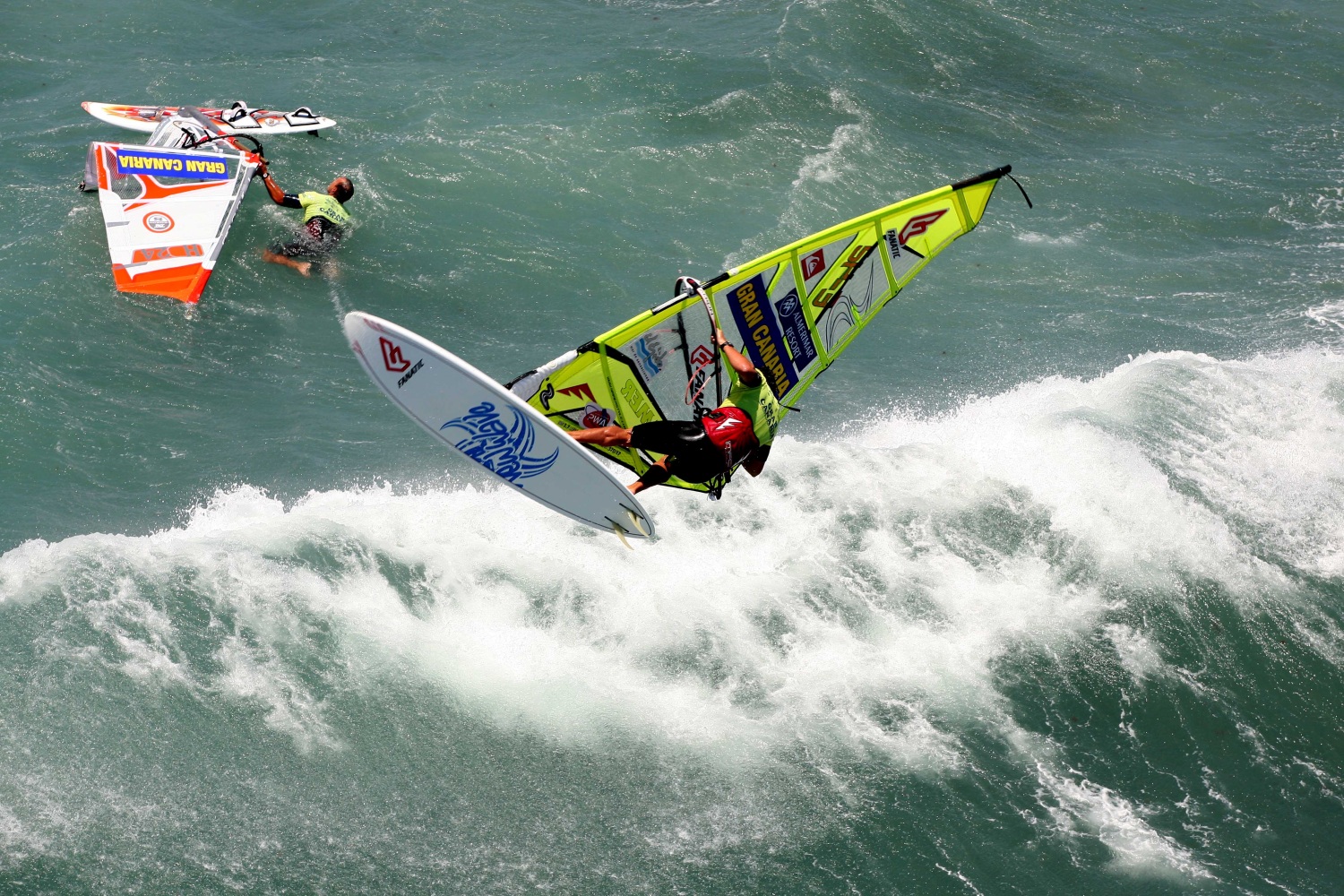
Windsurfing and kitesurfing
There are many places on the island where windsurfers (and kitesurfers) can enjoy stellar wind and wave conditions, with areas suited to every level. There are well-known spots like Pozo Izquierdo and Vargas, for the more adventurous windsurfers. But there is also Ojos de Garza, Tarajalillo, Bahía Feliz, Playa del Águila, San Agustin, Playa del Inglés, Anfi del Mar o Puerto Rico for the lesser mortals among us.
Pozo Izquierdo, located in the municipality of Santa Lucía, is the most widely known windsurfing spot internationally in the whole of Spain. Here, it seems as if the wind has taken up permanent residence, with outstanding conditions.
On the 'Arenal' (as the beach is known by locals), the wind blows in from the left and tends to be very strong, for which reason sails of 2, 8, and 4 metres in height are necessary to enjoy one of the world's windiest spots. The waves on average don’t fall below a metre in height, and sometimes they reach 3m. Pozo Izquierdo is the perfect destination for all those with the skills and the chops to begin somersaulting or practising other daring manoeuvres.
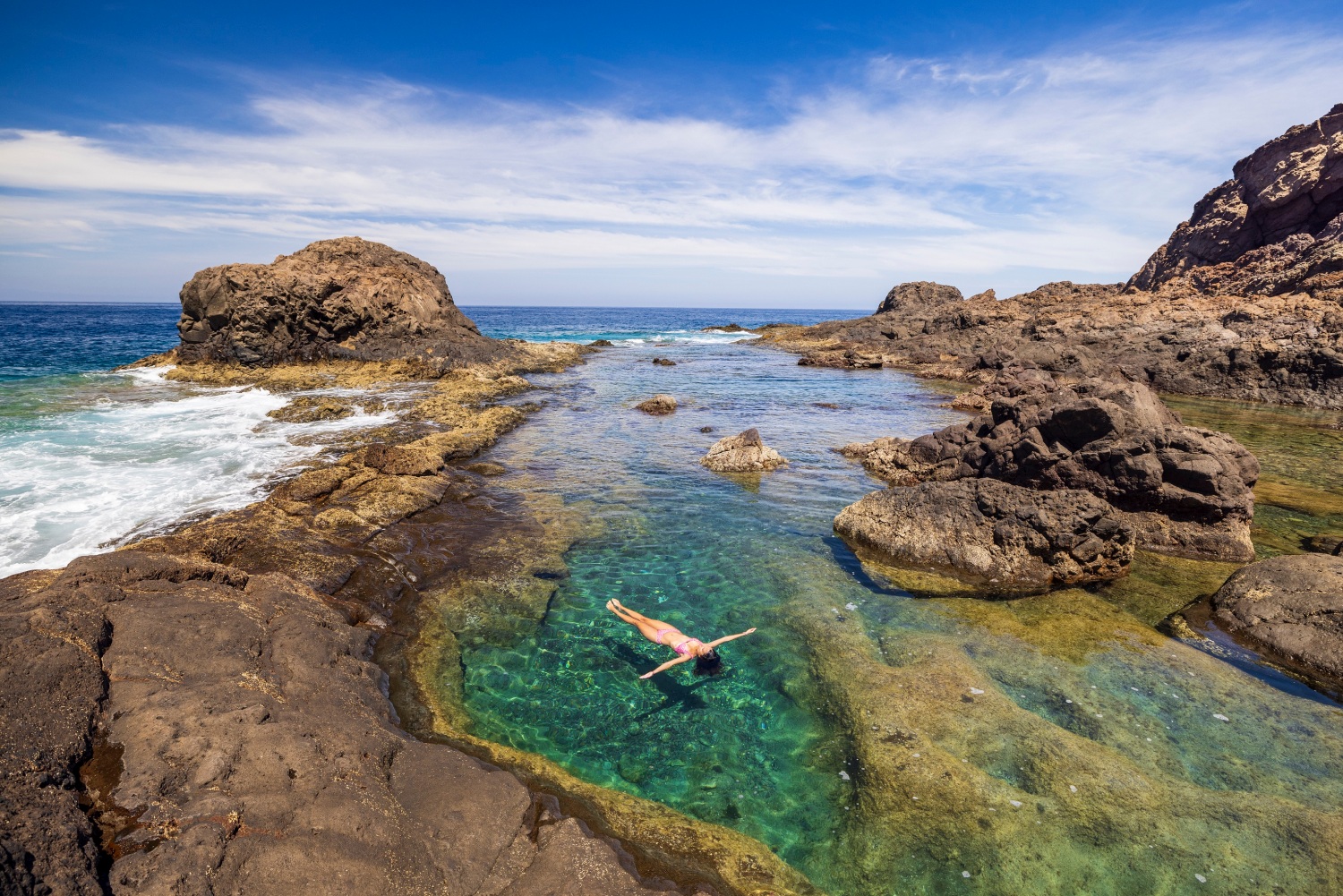
Swimming and other activities
Gran Canaria's best-known beaches offer wonderful opportunities for swimming, especially for families, but for something a bit different, try diving into the magical rock pools of Northern Gran Canaria. When the tide goes out, it leaves behind cool rock pools, perfect for a relaxing swim in the middle of the Atlantic Ocean. We suggest a selection of 8 rock pools you didn't know existed (until now): Los Charcones, El Altillo Rock Pool, Charco de San Lorenzo, Roque Prieto’s rock pool, Emiliano and ElAgujero, Los Roques and Las Salinas.
And, of course, where there's a beach, not far away you'll find specialist companies offering the opportunity to try jet-skiing, parasailing, flyboarding and sea excursions to go dolphin and whale watching. Something for everyone, indeed.
For more information about the outstanding watersports on offer in Gran Canraia, go to grancanaria.com
